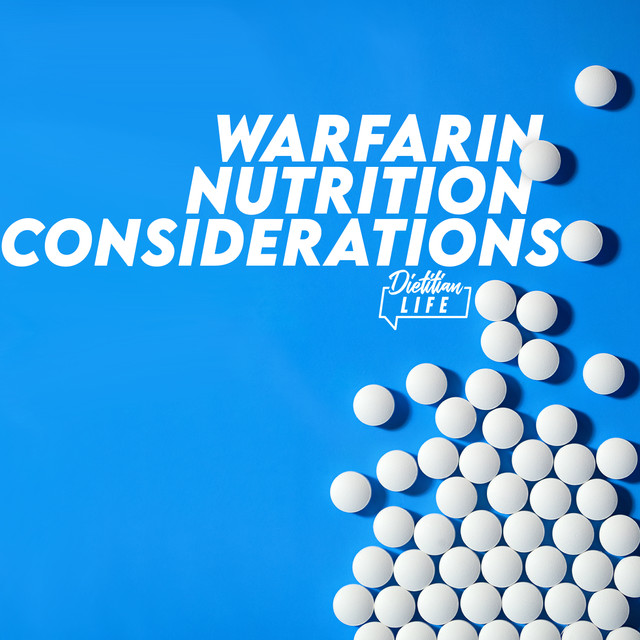Strategies Dietitians Can Implement to Optimise Warfarin Therapy
We all know of warfarin as our blood-thinning medication, but how many of us know the specific nutrition considerations when it comes to treating clients who are taking warfarin?
Warfarin’s anticoagulant capacity is used in the treatment of thromboembolic events including atrial fibrillation, deep vein thrombosis, pulmonary embolism, embolic stroke and prosthetic valve replacement. In order to successfully provide value, dietitians should be aware of the purpose of the warfarin therapy as this will determine the duration of their warfarin therapy (from 6 weeks up to 3 months, or lifelong) and influence the required duration for specific nutritional interventions.
Dietitians should consider the overarching treatment goal of ensuring the effectiveness of warfarin which is inferred through the International Normalised Ratio (INR) being stable within the therapeutic range of around 2-4. This measurement reflects the capacity of the medication to prevent blood clots and is closely monitored as instability can result in thromboembolism or other bleeding complications.
Nutrition Impacts on Warfarin
Vitamin K and Warfarin
Vitamin K is a fat-soluble vitamin that can be stored in the body for later use and its composition in food is not compromised by any cooking processes. It is required for the activation of factors involved in blood clotting, which is an opposing action to warfarin. When warfarin is administered, its action is enabled by inhibiting these clotting factors and subsequently, the levels of vitamin K. Variance to a client’s intake of vitamin K can have an impact on the action of warfarin. High intakes of vitamin K can lead to an increased risk of blood clotting (indicated by low INR levels), whilst low vitamin K intakes can increase the risk of a bleeding event (indicated by high INR levels).
Physical and Clinical Indicators Inferring INR Abnormalities
Physical and clinical indicators should always be considered when assessing clients. This is especially important for warfarin users as our vigilance, as well as the clients, can help to ensure immediate actions are initiated.
If the following signs are observed, dietitians should be ensuring their client’s general practitioner is alerted as changes to warfarin therapy may be warranted.
- Vomiting
- Infection
- Fever
- Diarrhoea
- Unexplained bruising/bleeding
- Red or dark brown coloured urine
- Red or black stools
- Prolonged bleeding from gums or nose
- Dizziness
- Difficulty breathing
- Chest pain
- Severe headaches
- Weakness
- Dark, purple, or mottled fingers or toes
- Coughing up blood
- Excessive menstrual bleeding
Nutrition Therapy
As dietitians, the primary goal of nutrition therapy for clients taking warfarin is to educate and design meal plans which include a consistent intake of vitamin K. In a small 2-week study of 26 patients, they observed that higher vitamin K intakes, of 76 +/- 40 mcg may be more successful in promoting a stable INR than lower, more restricted intakes of 29 +/0 17 mcg. Based on available data, dietitians should be guiding their clients to reach the current dietary recommendations of 65-80 mcg which has been considered acceptable for warfarin management.
Whilst there is limited evidence available, the American Heart Association recommends users limit their alcohol intake to 1-2 standard drinks per day. Higher intakes of alcohol can decrease the metabolism of warfarin leading to an increase in anticoagulation and subsequent risk of a major bleed.
During initial dietetic assessments and as required thereafter, a thorough review of the client’s medication can be valuable for ensuring no interacting complementary medicine is being used in conjunction with warfarin e.g. anticoagulants, antiplatelets, antithrombotics, non-steroidal anti-inflammatory drugs, anti-platelet complementary medicine/food.
Want to learn more? Sign up for a FREE Dietitian Life membership to get exclusive access to the huge library of clinical advice, and practical dietetic resources.

